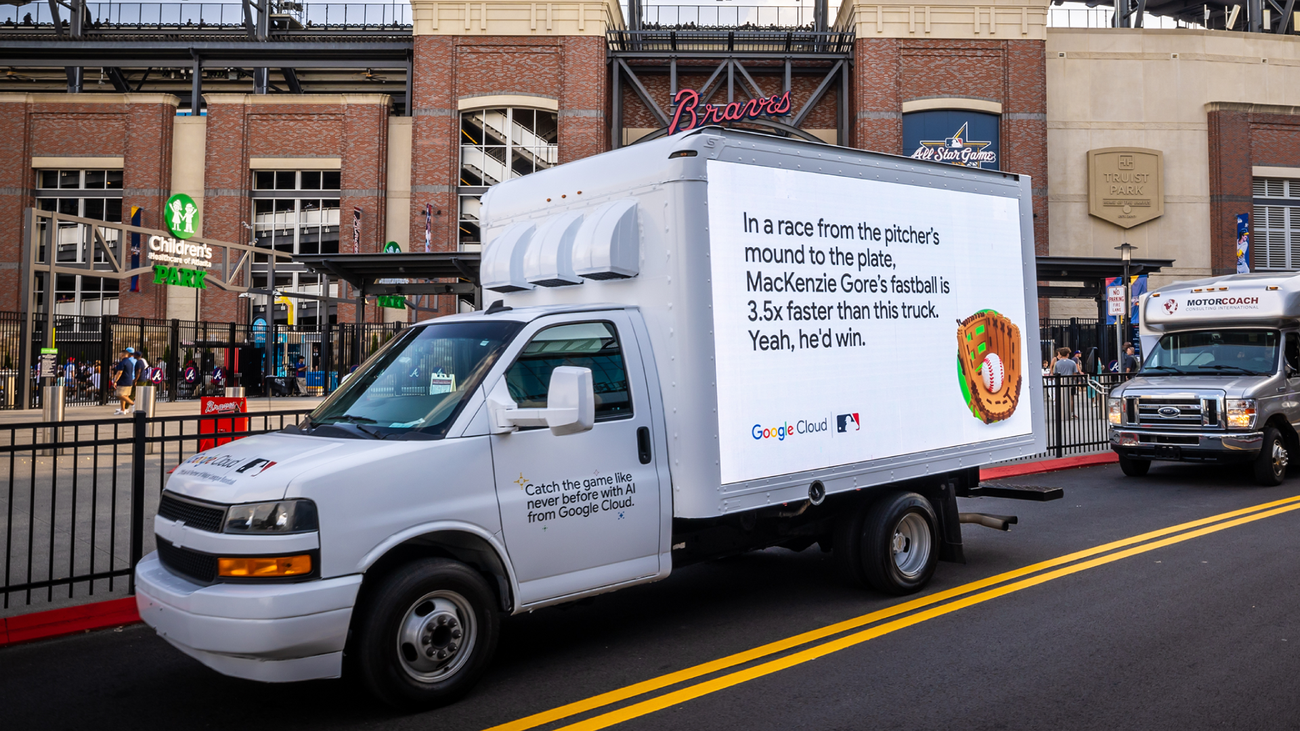
Calling the shots with AI
Baseball statistics tend to be anchored in the past, so for our activation, we wanted to see if we could make them as real and tangible and up-to-the-pitch as possible.
During the game, the home run modeler will assess the next players coming up to bat. The foundation for the model is historical data from the entire All-Star Game roster.
Our AI model not only contains conventional stats, like batting average and home run percentages, but also data on the direction of hits from stadiums across history, so we can estimate the most likely trajectory for each batter, should they hit a home run. Weather data is also a consideration, such as wind direction and temperature.
Once a section has been determined, the stats are run back through our most powerful AI model, Gemini 2.5 Pro. This step quickly suggests a few dozen messages that could be displayed on the jumbotron, scoreboards and all the screens lining the concourse at Truist Park.
We ran a demo before the game, and among the suggested messages was one for LA Dodgers’ standout Shohei Ohtani. In this test run, the model determined a home run would most likely land around sections 152-154 if Ohtani hit one. Here are some of the test messages that came back:








